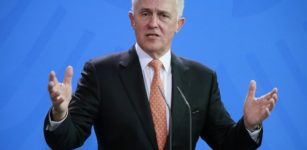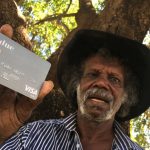Welfare Drug Testing Is an Invasive Punishment of the Poor

During his budget speech, Australian treasurer Scott Morrison announced that the federal government will “commence a modest drug testing trial for 5,000 new welfare recipients.” And those with a positive test result will be put onto cashless welfare cards.
Australian social services minister Christian Porter further explained in a press release that the “two-year trial of random drug testing welfare recipients” will be carried out “across three locations.”
These tests will be similar to those used by police across the country in their roadside drug testing programs.
While prime minister Turnbull has described the drug testing program as a “policy based on love.” Harm reduction experts, civil liberties groups and advocates for the poor have described it as an invasive, zero-tolerance policy designed to punish some of the nation’s most disadvantaged people.
A precondition for the dole
A government factsheet outlines that the trials will begin on January 1 next year, and will involve new recipients of Newstart and Youth Allowance – meaning mostly young people. The government states the policy is to “ensure taxpayers’ money is not being used to fund drug addictions.”
Those who fail the initial test will be placed on “welfare quarantining,” which is the controversial cashless welfare card that restricts how a recipient can spend 80 percent of their social security payment. This amount can’t be withdrawn from an ATM, or used to buy alcohol or to gamble.
It’s been estimated that the federal government is spending up to $18.9 million dollars on trialling the cashless system on 1,850 people. Money well spent in anyone’s books.
Welfare recipients that fail a drug test once will be tested again. And if they test positive on subsequent tests, they’ll be sent to see a medical professional “for an assessment of their substance abuse issues and any appropriate treatment options.”
Random?
The government has repeatedly specified that welfare drug testing trials will be carried out randomly at three locations. But just how random will this be?
Treasurer Morrison has explained that the three trial sites will be “targeted areas” known to be locations of high drug use. And to find these locations the government’s going to test the nation’s sewage for illicit substances.
Once the areas are found, the government will then have a group of unemployed young people from these high drug use locations and they’ll then have to randomly select who to test.
And according to their factsheet, what the government is going to do to select them is use “a data-driven profiling tool developed for the trial to identify relevant characteristics that indicate a higher risk of substance abuse issues.”
In reality, this system is so targeted they can hardly miss.
Just like roadside testing
The drug testing of welfare recipients will be conducted in much the same manner as the highly criticised program of roadside drug testing carried out by police. It will utilise saliva, hair follicle and urine testing.
Like roadside testing, Centrelink will only be testing for three illicit substances: cannabis, MDMA and amphetamines. This means that while the government is concerned about these three substances, the use of heroin poses no problem to them, and neither does cocaine: a drug usually associated with the rich.
Dr Alex Wodak, president of the Australian Drug Law Reform Foundation said that this system of testing ignores the “most important drug affecting unemployment,” which is alcohol.
The doctor further explained that testing positive isn’t an indication that a person actually has any drug issues. “Drug testing is an unreliable method of separating people using drugs occasionally, but getting on with their lives, from others using drugs problematically,” he told Sydney Criminal Lawyers®.
Making it worse
Roadside drug testing in Australia has been condemned as a flawed system. It does little to improve road safety, as it only tests for minute traces of those three illicit substances, and it doesn’t test for driver impairment.
And in the same way, Dr Wodak pointed out, welfare drug testing appears to be directed at an important social problem, when in fact, it’s “directed at widening the prosecution of people using illegal drugs.”
The leading harm reduction expert said that what will result from this system is that it will actually make the situation of those people dependent on drugs “even more adverse.” And it’s well known, that increasing adversity for these people “has no or minimal effect” on their drug use.
“We all know this from our everyday experience,” he added.
It’s failed overseas
“The fact that experience with similar measures in other countries were unsuccessful has been ignored,” Dr Wodak continued. In New Zealand, a similar program was set up to drug test welfare recipients applying for certain jobs.
Of the tens of thousands tested, hardly any came up positive, and experts have described it as a waste of taxpayers’ money. While in the United States, programs like these have been ruled unconstitutional in the courts, as they interfere with an individual’s rights to liberty and privacy.
However, in Australia we have no bill of rights to protect these entitlements.
The likely effects
According to Dr Wodak, “it is hard to see this scheme not increasing hardship or adding stress to people who need more, not less support.” He points out that this country’s drug treatment sector is “already over flowing and underfunded,” and rates of youth unemployment are at high levels.
So to take away the control drug dependent welfare recipients have over the little money they do receive could have quite an adverse impact on society as a whole. “There is a real risk that these measures will increase crime,” Dr Wodak said.
So why implement such measures?
Over recent years, there’s been vocal support to move towards treating illicit drug use as a health issue, rather than a criminal one. Take the recommendations of last year’s Australian National Drug Summit, or the Greens harm reduction motion that passed through the federal Senate in August last year.
It’s against this burgeoning sentiment that the federal government have introduced further punitive drug measures to deal with mainly youth who can’t get a job. And Dr Wodak puts this down to the Turnbull government’s recent lack of support in the opinion polls and a return to notion of “let’s make scapegoating great again.”
He pointed out that the measures have actually been “favourably received” by many in the public. The post-budget Essential Poll revealed that 69 percent of those surveyed approved of drug testing “jobseekers receiving unemployment benefits.”
The most detrimental overlooked
But, the “more important proposal” has been broadly overlooked, Dr Wodak said. And that’s to terminate the Disability Support Pension from those that receive it “on the sole basis that they are affected by drug and alcohol abuse,” which is again outlined in the government factsheet.
As of July 1 this year, around 450 people will be kicked off disability support, after having been deemed to have a condition that warranted being given the pension in the first place. Of those affected, 90 percent will be moved onto Newstart or Youth Allowance.
And as for that last 10 percent, who knows what awaits them.
“To use the parlance of Alcoholics Anonymous,” Dr Wodak concluded, “governments have not yet reached “rock bottom” in their long experiment with punishment and psychoactive drugs.”







